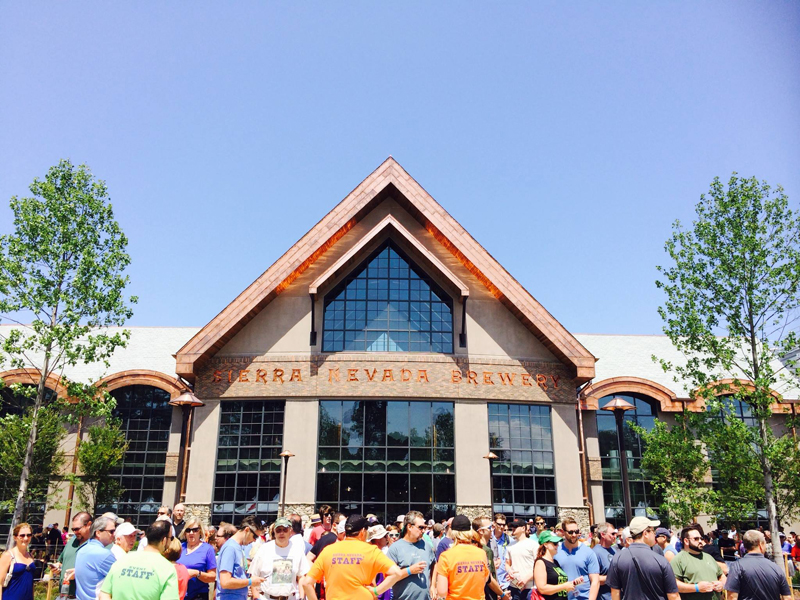Exporting a Sense of Home
For many California breweries, there really is no place like home. Almost 90 percent of the craft breweries that operated there last year sold beer only in their home state. Further, about 85 percent of breweries in California didn’t produce more than a thousand 31-gallon barrels last year. It seems to be the epicenter of the nanobrewery movement, catering to ever smaller circles of local fans. These stats, the Brewers Association chief economist Bart Watson argued early in the summer, provide evidence that most of the over 3,000 breweries in the United States are “small and locally focused.” The California figures come from state tax records, which show just how big and global the state’s beer market is: the largest in the United States at almost 23 million barrels last year. Just the two largest importing companies—Crown (now Constellation, which imports Corona and the Modelo portfolio) and Heineken USA—had over a 21 percent share of the California market last year, compared with about 7.5 percent for small in-state craft brewers, which produce about 1.7 million barrels.
Those same small California brewers “exported” well over another million barrels out of state last year (not necessarily out of the country: Breweries report volume shipped out of state as “exported” for tax records). The three largest—Sierra Nevada, Lagunitas and Stone—shipped more than three-fourths of that. As you might expect, Sierra shipped about two-thirds of production outside its home state, making it significantly more dependent on those markets than Lagunitas, which “exported” just over half of production, compared with about 43 percent of Stone’s production.
Assuming for a minute that a brewery expands its distribution to increase sales incrementally (rather than replace lost sales at home), the most obvious investment will involve producing more beer. That can mean testing the limits of both current equipment and staff, or, with a greater investment, ordering more steel and hiring more people. More beer also means more raw materials to brew, some of which may not be as easy to come by in as they once were. Big increases to a brewery’s production could put stress on its water supply; that’s certainly top of mind for many California breweries these days. It also has implications for hop contracts, often five years out, as well as storage space for barley or packaging materials, lab space for yeast management or quality control and so on and so forth. There are also research and prep work to vet the various distribution options, understand compliance with new state laws, identify opportunities in the market and more.
Supporting sales in a market away from home requires investments, too. Many distribution agreements lay out specific marketing requirements for both supplier and wholesaler. While some brewing companies may leave the brunt of local legwork to distributors, many larger suppliers are finding success with more costly investments in new markets. Rather than put pressure on just their brand with billboards or commercials, breweries are bringing a little bit of their strategies from home to new markets. Sales reps provide a face and a personality for a brand in a new market. Hosting tastings and special events allows beer drinkers to forge connections with brands. Sending out founders, brewmasters and others along with some specialty beers gives folks a taste of what it’s like to be in that brand’s home market. Acting and feeling local by forming relationships with local accounts or hiring local sales people can make all the difference in a crowded market.
The next logical step in exporting a little bit of home out of state is building a new brewery there. Based on those above stats then, it shouldn’t surprise that Sierra Nevada, Lagunitas and Stone all decided to build new facilities in the last few years. But breweries are no longer just manufacturing plants these days; they’re visitor centers, too, places beer drinkers can go to further connect with the folks that make their beer. Making a somewhat dangerous manufacturing facility visitor-friendly can jack up construction costs significantly, but depending on the brand, it can come with some odd existential questions, too. Sierra Nevada beer not made in the Sierra Nevada mountains? It’s more of a gut reaction than anything, often one that subsides over time. When Brooklyn Brewery recently announced plans to potentially build a new brewery on Staten Island, a local paper lamented: How could “Brooklyn” come from Staten Island? And that new location is just a bridge away, not across the entire country.
Interestingly, the new Brooklyn plant will largely support growth abroad: It expects to sell a full 60 percent of its beer outside the United States by 2022, when it forecasts producing about 750,000 barrels, more than three times last year’s shipments. It already has a strong foothold in a few export markets, particularly Sweden. Stone announced plans for its Berlin brewery with “no” market research, in classic Stone style, taking at least 18 months, millions of dollars and quite a bit of time to feel at home there. Many other small brewing companies are settling into new markets and new breweries stateside, raising the question, How many “homes” can one brewery effectively maintain?
Christopher Shepard
Christopher Shepard is a writer and editor for Beer Marketer’s Insights, spending most of his time walking the craft beat for Craft Brew News.


Leave a Reply